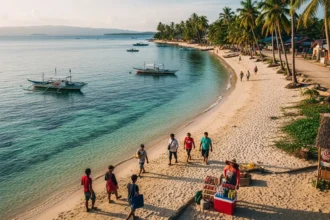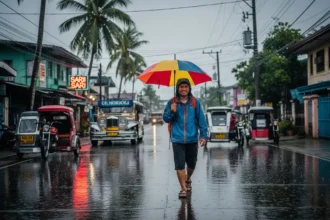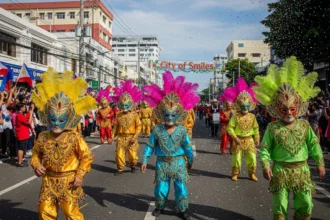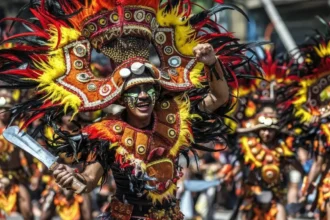For too long, the name Basilan has been whispered with a note of caution, a place shrouded in outdated headlines and misconceptions. But to truly understand the Philippines, one must be willing to look beyond the surface, to seek the stories that are woven into the very fabric of its most remote corners. This Lamitan travel guide is an invitation to do just that. Nestled in the heart of Basilan, Lamitan City is not a place of fear, but a city of vibrant color, profound history, and immense cultural pride.
This is the home of the Yakans, an indigenous people whose artistry in weaving is a spectacle of color and geometry. To visit Lamitan is to witness a living heritage, a city that is actively preserving its traditions while painting a new, more accurate story for the world to see. It’s a destination for the curious traveler, the culture enthusiast, and anyone who believes that the true soul of a place is found in its people and their art. Prepare to be enchanted by the intricate world of Yakan culture and the resilient spirit of Basilan.
📜 A Tapestry of History and Resilience
To appreciate Lamitan today is to understand its past. The city’s story is deeply intertwined with the Yakan people, the traditional inhabitants of Basilan, who have nurtured a unique and sophisticated culture for centuries. The city itself was formally founded in the late 1800s by the legendary Pedro Cuevas, a Caviteño who became a respected leader and was known as Datu Kalun. He is celebrated for bridging cultures and establishing a peaceful, multicultural community.
This history of coexistence and resilience is the bedrock of modern Lamitan. After years of challenges, the city has emerged as a beacon of peace and a center for cultural preservation in the region, earning the title “City of Colors.”
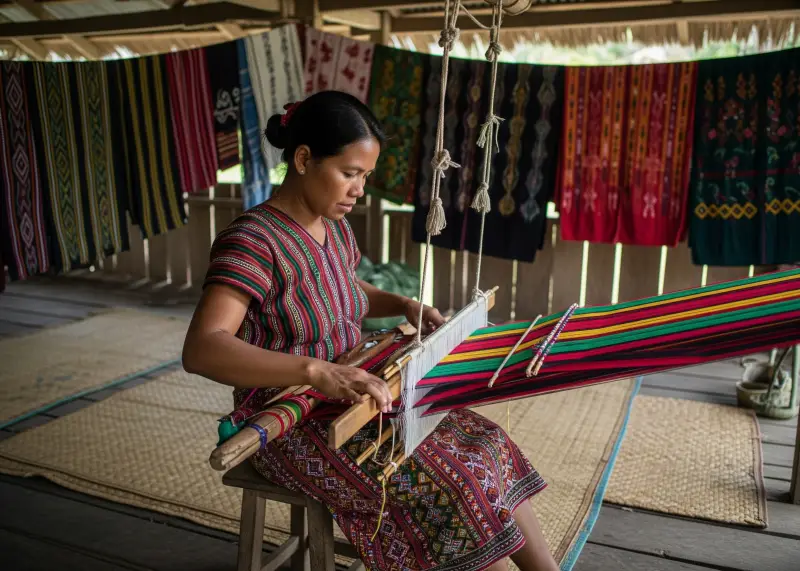
🎨 The Heartbeat of Lamitan: Yakan Culture
The soul of Lamitan resides in the vibrant traditions of the Yakan people. Their culture is expressed in their music, their distinct facial paintings known as tanyak-tanyak, and most famously, in their breathtaking textile art.
The Art of Tennun: More Than Just Weaving
The Yakan art of weaving, known as tennun, is a complex and deeply meaningful tradition passed down through generations, primarily by women. It is not merely a craft but a form of storytelling, with each geometric pattern and bold color combination holding a specific meaning, often inspired by nature and Islamic sacred geometry.
- The Backstrap Loom: Yakan weavers use a traditional backstrap loom, a simple yet effective device that tethers the loom to the weaver’s own body, making them an integral part of the creative process.
- Intricate Patterns: The designs are not random. They are meticulously planned and memorized, with patterns like the bunga sama (a diamond design) and the pussuk labung (a sawtooth pattern) being hallmarks of their craft.
- Vibrant Colors: Yakan textiles are famous for their eye-catching colors-bright pinks, yellows, greens, and blues that reflect the vibrant natural surroundings of Basilan.
Where to Witness the Weaving Tradition
The best place to experience this living art form is at the Yakan Weaving Village in Lamitan. Here, you can watch the weavers at work, their hands moving with a speed and precision that comes from a lifetime of practice. It’s an opportunity to speak with the artisans, learn about the meanings behind the patterns, and purchase authentic, handcrafted textiles directly from the source. Buying a piece of tennun is more than just acquiring a souvenir; it’s helping to preserve a priceless cultural heritage.
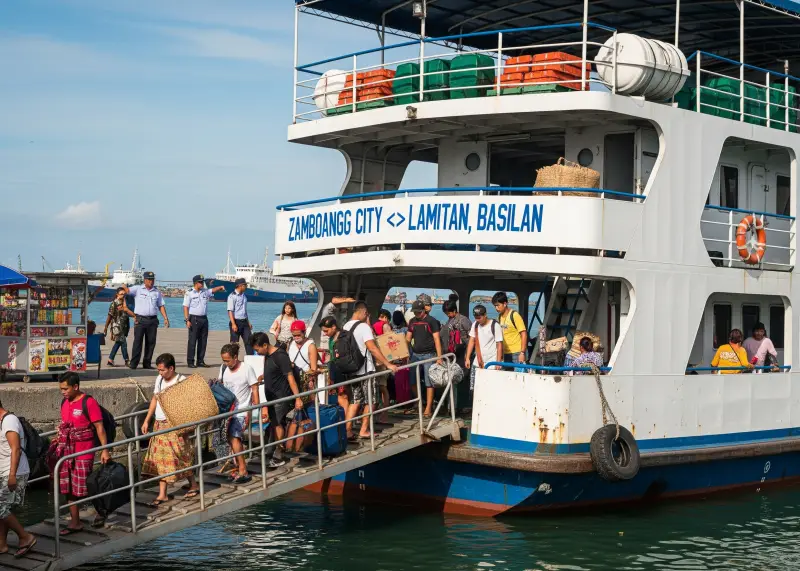
✈️ Planning Your Trip: Getting There and Staying Over
A trip to a place as special as Lamitan requires a bit of planning, but the journey is part of the adventure and is more straightforward than many people think.
How to Get to Lamitan
The main gateway to Basilan is Zamboanga City, which has a busy airport with regular flights from Manila, Cebu, and other key cities.
- Fly to Zamboanga City (ZAM): Book a flight with a major local airline.
- Go to the Zamboanga Port: From the airport, take a tricycle or taxi to the city’s main seaport.
- Take a Ferry to Lamitan: Look for a fast craft or a RORO (Roll-on/Roll-off) ferry heading directly to Lamitan Port. The journey across the Basilan Strait is scenic and typically takes between 1 to 1.5 hours.
Where to Stay
While Lamitan is developing its tourism infrastructure, accommodation options within the city proper are generally modest and consist of smaller inns, guesthouses, and pension houses.
- Local Inns: These offer basic, clean, and affordable lodging. It’s the best way to stay in the heart of the city. Booking in advance is highly recommended, especially if your visit coincides with the Lami-Lamihan Festival.
- Day Trip from Zamboanga: For travelers who prefer more hotel options, staying in Zamboanga City and taking an early morning ferry for a day trip to Lamitan is a very popular and feasible alternative.
🗺️ A Lamitan Travel Guide: What to See and Do
Beyond the weaving villages, Lamitan offers a blend of natural beauty and cultural landmarks that paint a fuller picture of the city.
Bulingan Falls: Nature’s Sculpted Sanctuary
A short trip from the city center lies Bulingan Falls, one of Basilan’s most treasured natural wonders. What makes these falls so unique are the stunning columnar rock formations that flank the cascading water, resembling giant, sculpted organ pipes. The cool, clear water collects in a natural basin, making it a perfect spot for a refreshing swim after a morning of exploring. It’s a testament to the raw, unspoiled beauty that much of Mindanao holds.
City Landmarks and Cultural Sites
While in Lamitan, take the time to visit a few key sites that tell the city’s story.
- Datu Kalun Shrine: A monument dedicated to the city’s founding father, Pedro Cuevas, celebrating his legacy of peace and unity.
- Lamitan City Hall: A surprisingly grand and picturesque building that serves as a symbol of the city’s progress and pride.
- Local Markets: Immerse yourself in the daily life of Lamiteños by visiting the public market, where you can find local delicacies and fresh produce.
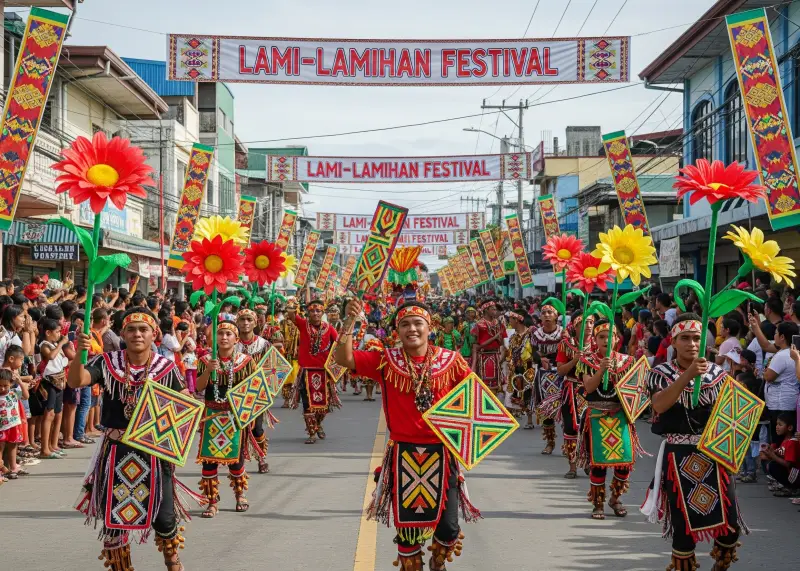
🎊 A Celebration of Life: The Lami-Lamihan Festival
If you can time your visit for the last week of June, you will be treated to the city’s most spectacular event: the Lami-Lamihan Festival. “Lami-Lamihan” translates to “merry-making,” and the festival is a vibrant celebration of Yakan culture, peace, and the city’s foundation anniversary.
The streets explode with color and energy as locals don their traditional Yakan attire. It’s a multi-day event that showcases the very best of Lamitan’s heritage.
| Festival Highlight | What to Expect |
|---|---|
| Street Dancing Parade | Performers in elaborate Yakan costumes dance through the streets, showcasing traditional movements and music. |
| Yakan Weaving Contest | The city’s best weavers demonstrate their incredible skill and speed in a public competition. |
| Traditional Horse Races | A thrilling and colorful display of the Yakan’s equestrian skills, a significant part of their history. |
| Cultural Showcase | Presentations of Yakan music, dance, and other traditions, offering a deep dive into their heritage. |
📌 Frequently Asked Questions
1. Is it safe to travel to Lamitan City? Yes. Lamitan City is widely considered safe for tourists. The local government has made significant efforts to ensure peace and security, and the city is welcoming to visitors. As with any travel, it’s always wise to coordinate with local tourism officials or trusted guides.
2. What is the best time to visit? The last week of June is the most exciting time to visit due to the Lami-Lamihan Festival. Otherwise, the dry season from December to May is ideal for exploring natural attractions like Bulingan Falls.
3. What should I buy as a souvenir? Authentic, handwoven Yakan textiles are the ultimate souvenir. You can buy table runners, placemats, bags, and even entire bolts of fabric. Buying directly from the weavers ensures your money supports the community.
4. How can I be a respectful tourist? Always ask for permission before taking photos of people, especially the weavers. Dress modestly, particularly when visiting communities. Be open, smile, and engage with the locals; their warmth and hospitality are one of Lamitan’s greatest treasures.
5. What are the main languages spoken? The main dialect spoken is Chavacano, but Yakan, Tausug, Cebuano, and Tagalog are also widely understood. English is commonly used in business and government.
❤️ Reflections on the Real Mindanao
In all my travels, the journeys that have stayed with me the longest are those that have challenged my perspective. Lamitan did just that. To see the intricate work of the Yakan weavers up close is to understand that this is not just a craft; it is a language, a history, and an identity all woven into one. It’s a powerful reminder that the most beautiful parts of our country are often hidden behind a veil of outdated news and unfounded fear.
Lamitan is a city that refuses to be defined by a narrative it did not write. Instead, it is weaving its own-one of vibrant color, deep-rooted heritage, and a peaceful, welcoming spirit. A trip here is more than just a vacation; it’s an education and an honor. It’s a chance to see the real Mindanao, a place not of conflict, but of creativity and profound cultural beauty.




